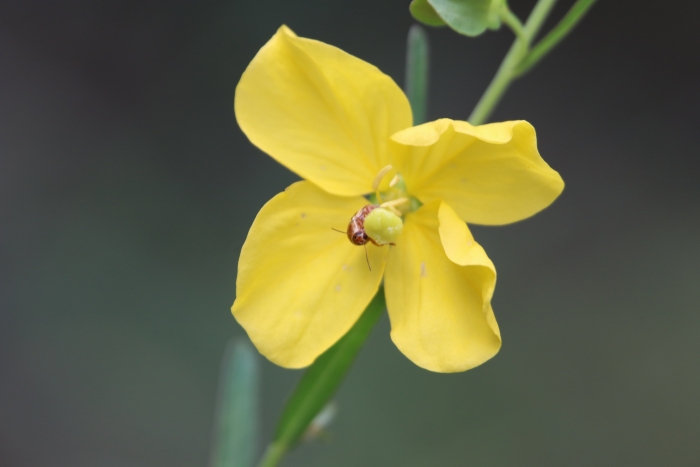Savannah Primrose-Willow
(Ludwigia virgata)
Savannah Primrose-Willow (Ludwigia virgata)
/
/

Lauren McLaurin
CC BY 4.0
Image By:
Lauren McLaurin
Recorded By:
Copyright:
CC BY 4.0
Copyright Notice:
Photo by: Lauren McLaurin | License Type: CC BY 4.0 | License URL: http://creativecommons.org/licenses/by/4.0/ | Rights Holder: Lauren McLaurin | Publisher: iNaturalist | Date Created: 2019-06-17T11:44:33-07:00 |

























Estimated Native Range
Summary
Ludwigia virgata, commonly known as Savannah Primrose-Willow, Virginia Seedbox, or Virginia Water Primrose, is a perennial herb native to wet prairies, marsh edges, and pond margins in the Southeastern United States. It typically grows at a moderate rate to a height of 1-3 feet (0.3-0.9 meters) and is characterized by its upright form and lance-shaped leaves. The flowers, which are small and yellow, bloom in the summer and are not particularly showy, but they do attract pollinators such as bees and butterflies. The plant also produces distinctive box-like seed capsules that are of interest to some gardeners.
Savannah Primrose-Willow is valued for its ability to thrive in wet conditions and is often used in rain gardens, water features, and naturalized wetland plantings. It is also utilized for erosion control due to its dense root system. In cultivation, it requires full sun to part shade and prefers medium to slow-draining clay or loam soils. It is tolerant of flooding and can be submerged for periods, making it suitable for water gardens. While generally low-maintenance, it can spread aggressively in ideal conditions, so care should be taken to manage its growth in smaller garden settings.CC BY-SA 4.0
Savannah Primrose-Willow is valued for its ability to thrive in wet conditions and is often used in rain gardens, water features, and naturalized wetland plantings. It is also utilized for erosion control due to its dense root system. In cultivation, it requires full sun to part shade and prefers medium to slow-draining clay or loam soils. It is tolerant of flooding and can be submerged for periods, making it suitable for water gardens. While generally low-maintenance, it can spread aggressively in ideal conditions, so care should be taken to manage its growth in smaller garden settings.CC BY-SA 4.0
Plant Description
- Plant Type: Herb
- Height: 1-3 feet
- Width: 1-2 feet
- Growth Rate: Moderate
- Flower Color: Yellow
- Flowering Season: Spring, Summer, Fall
- Leaf Retention: Deciduous
Growth Requirements
- Sun: Full Sun, Part Shade
- Water: High, Aquatic
- Drainage: Medium, Slow, Standing
Common Uses
Erosion Control, Low Maintenance, Water Garden
Natural Habitat
Wet prairies, marsh edges, and pond margins in the Southeastern United States
Other Names
Common Names: Virginia Seedbox, Virginia Water Primrose
Scientific Names: , Ludwigia virgata, Isnardia virgata, Ludwigia alternifolia, Ludwigia juncea, Ludwigia lutea, Ludwigia lutea, Ludwigia ramosissima, Ludwigia tuberosa,
GBIF Accepted Name: